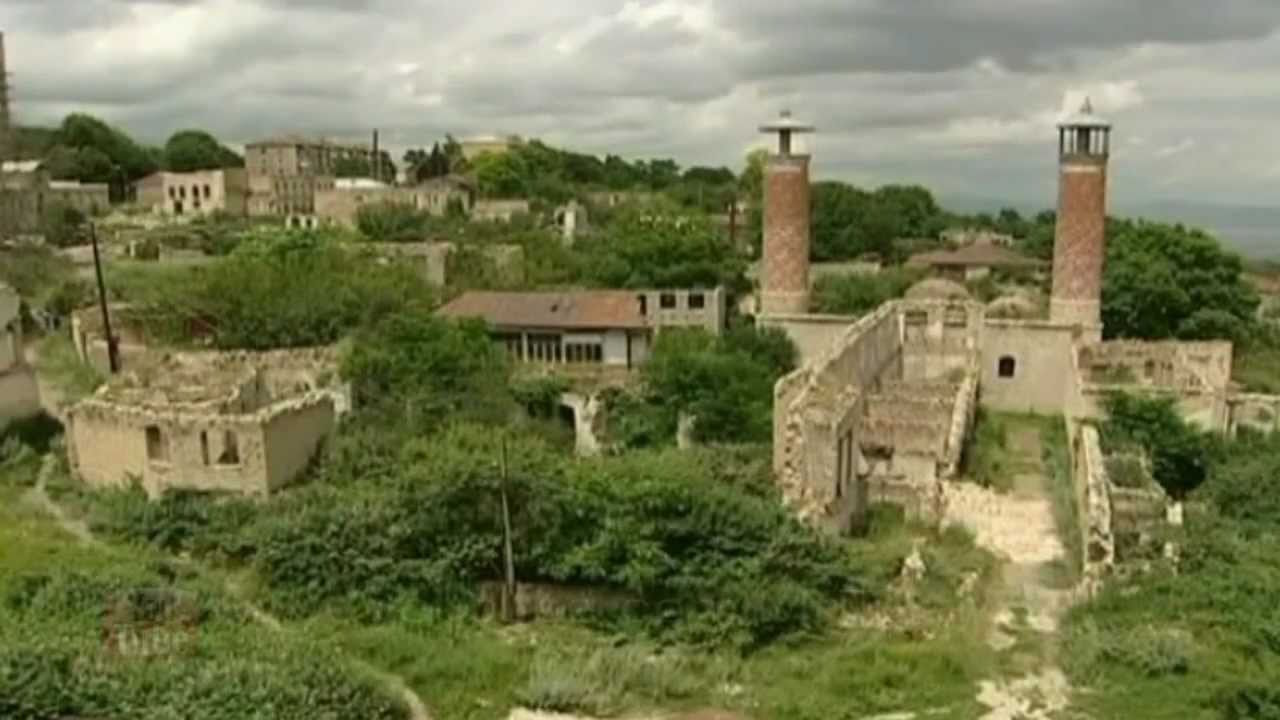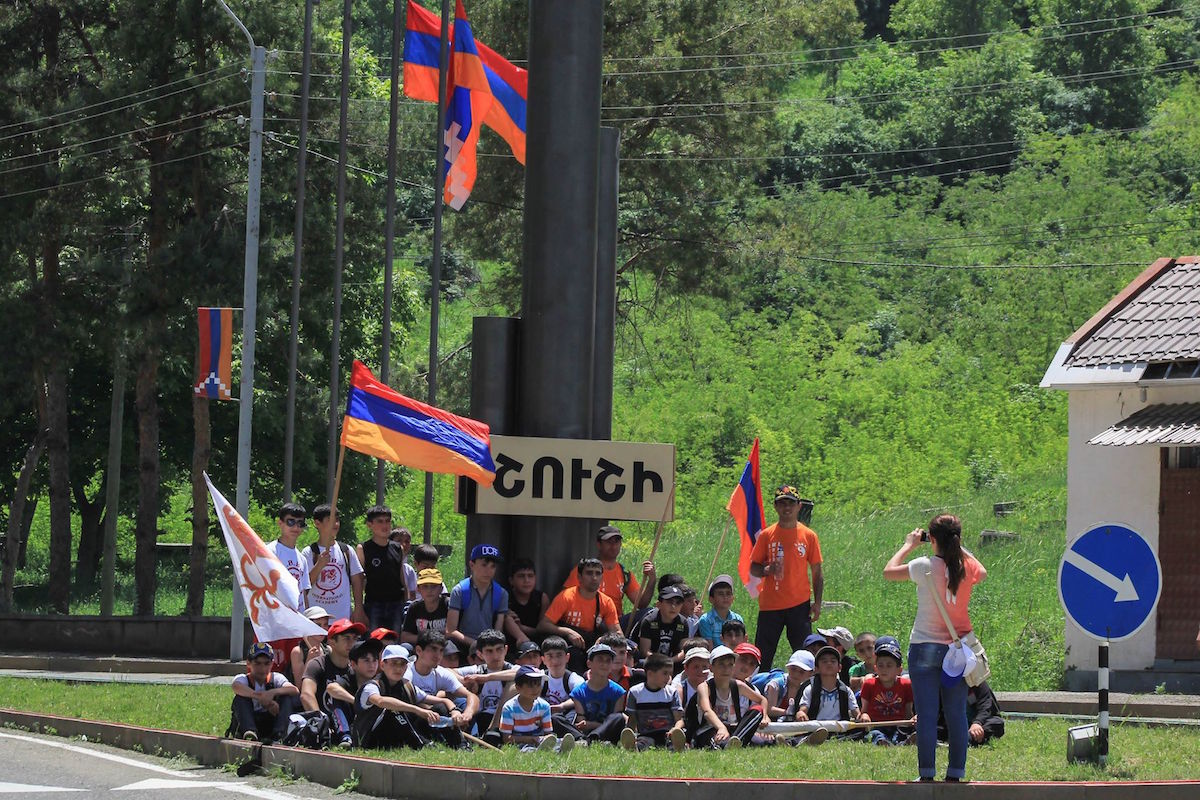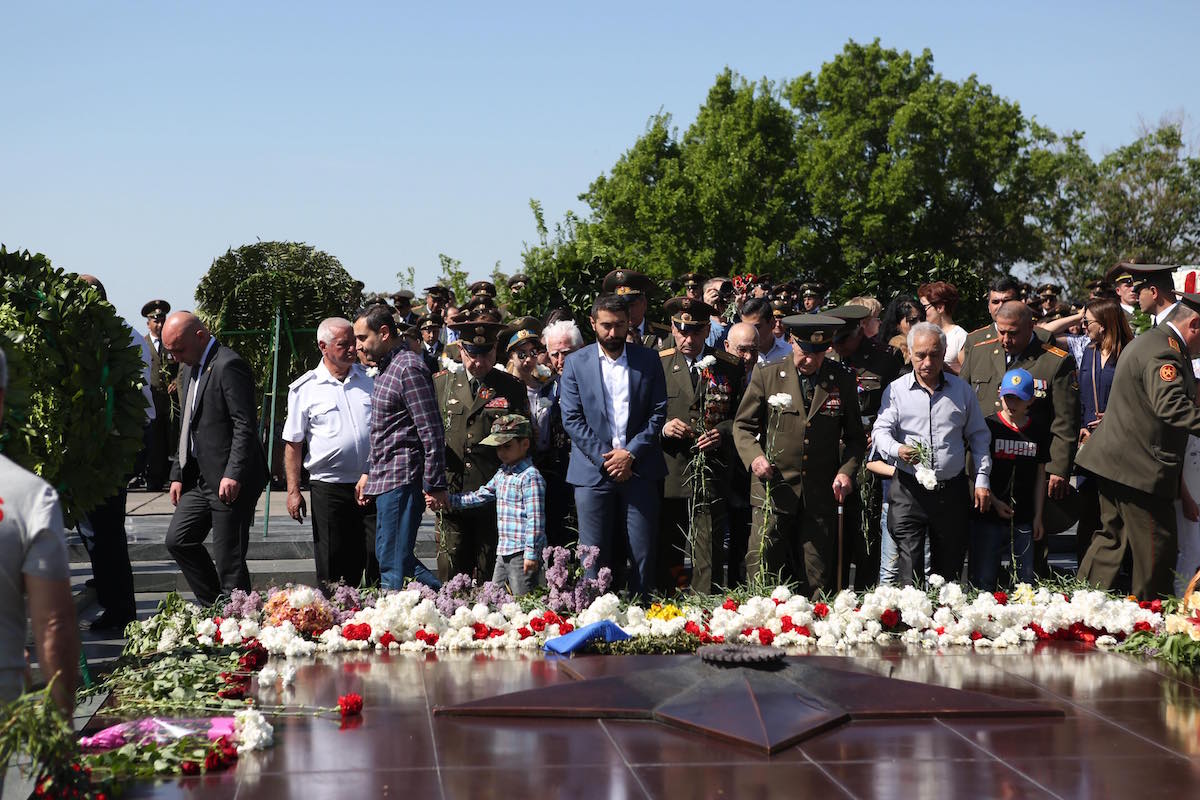27 years since the Armenian-Azerbaijani battle for Shusha/Shushi
May 8-9 are memorable days in Azerbaijan, Armenia and Karabakh – Azerbaijan marks the day on its calendar as the day of occupation of the city of Shusha [Azerbaijani spelling] while Armenia and Karabakh celebrate it as the day of liberation of Shushi [Armenian spelling].

Background
Before the start of the Karabakh conflict in the 1990s, the majority of the population of the city were Azerbaijanis – it was the only regional center with an Azerbaijani majority in the Soviet Nagorno-Karabakh Autonomous Region (NKAR).
The city is located high above the surrounding area and from there it was possible to fire on the capital of the Nagorno-Karabakh Autonomous Region Stepanakert.
The Azerbaijani army actively used this advantage. Therefore, control of the city was of great importance for both parties.
On May 8, 1992, fierce battles for the city took place. According to reports by Armenian sources, 3,800 volunteers from the Armenian side participated in the fighting.
Arkady Ter-Tadevosyan led the forces of self-defense of Karabakh. At 4 o’clock in the morning of May 9, 1992 he said that “the enemy has left Shushi, the Armenian fortress has been liberated”.
British journalist and writer Thomas de Waal dedicated a chapter of his book Black Garden to the event. He writes:
[su_quote] “The further I went in search of answers, in search of the root cause of these killings, the more I was disappointed. No one considered themselves guilty of anything. In a conversation with me, Robert Kocharyan [the former president of Armenia, who came from Karabakh] expressed only the most general considerations about friendship and interethnic conflict. ‘Of course, I have friends [among Azerbaijanis] … I remember all my friends, I have nothing to reproach them for, we maintain normal friendly relations. But usually, when an ethnic conflict begins, friendship always recedes to the background.’”[/su_quote]
2019
In Stepanakert

On May 8-9, many events dedicated to the liberation of Shushi were organized in Stepanakert, including expeditions for young people to battle sites.
On May 9, a parade dedicated to three dates at once took place in the central square of Stepanakert: the Day of Liberation of Shushi, the Day of the Formation of the Nagorno-Karabakh Defense Army and Victory Day [ed. the end of WWII]
Armenian Prime Minister Nikol Pashinyan and his wife are participating in the festivities.
The third president of Armenia, Serzh Sargsyan, is also present.
Earlier, Karabakh President Bako Sahakyan and former President Arkady Ghukasyan appealed to the Armenian Prosecutor General’s Office to change the preventive measure against the first Karabakh President Robert Kocharyan so that he could also participate in the festivities.
Robert Kocharyan, who is also the ex-president of Armenia, has been arrested since December 2018 on charges of overthrowing the constitutional order of Armenia and for his complicity in the bloody dispersal of crowds on 1 March 2008 that cost 10 people their lives.
The Prosecutor General’s Office of Armenia replied to the Karabakh presidents that this matter is not within their legal competence.
In Yerevan

The day is a bank holiday in Armenia, given that three holidays are also being celebrated on the same day.
Armenian President Armen Sargsyan, the Minister of Defense and other officials came to congratulate veterans in Victory Park in Yerevan. As usual, he congratulated the veterans and the Catholicos of all Armenians.
The President of Armenia on the occasion of the holiday said:
“In the Karabakh war and the liberation of Shushi … the united force of Armenia, Artsakh and the Diaspora won … We must make efforts so that our victories continue, so that peace in Armenia and Karabakh is unshakable.”
In Baku
The Ministry of Foreign Affairs of Azerbaijan issued a “statement on the 27th anniversary of the occupation of the city of Shusha”.
The statement says that “the occupation of the city of Shusha is an integral part of the systematic aggression and occupational policy of Armenia towards Azerbaijan.
“It has been reported that monuments of Azerbaijani culture were destroyed in Shusha, and “more than four thousand people were illegally settled in the city”.
The Azerbaijani Foreign Ministry condemned the fact that the Prime Minister of Armenia went to Karabakh to participate in the celebrations.
“A visit by the political leadership of Armenia to the city of Shusha, which is under the military occupation of this country, and the celebration here of the so-called ‘Victory Day’ is another provocation of the Armenian side and at the same time proves once again the direct participation of this country in the occupation of Azerbaijani lands”, the Azerbaijani Foreign Ministry said in a statement.
The armed conflict between Azerbaijan and Armenia over Nagorno-Karabakh occurred in 1991-1994. After the conclusion of a truce, the Nagorno-Karabakh Republic exists as a de facto independent republic, not recognized by any state in the world, including Armenia.
Azerbaijan considers Karabakh and the territories around it, taken during the war, occupied and demands their return.
Parties to the conflict regularly report casualties on the contact line and accuse each other of provocations.
Some changes in the conflict resolution process occurred in 2018–19 after the change of power in Armenia.
A meeting took place between the President of Azerbaijan and the Prime Minister of Armenia. Prior to this, the foreign ministers of the two countries made a joint statement about a new initiative “preparing nations for peace”.
•Armenian, Azerbaijani Foreign Ministers agree ‘to take measures to prepare the people for peace’
•Karabakh conflict: “No breakthrough, but a serious talk about peace took place”
Toponyms and terminology used in this article, and the views, opinions and strategies it contains don’t necessarily reflect the opinions of JAMnews or any employees thereof. JAMnews reserves the right to delete comments it considers to be offensive, inflammatory, threatening, or otherwise unacceptable



















